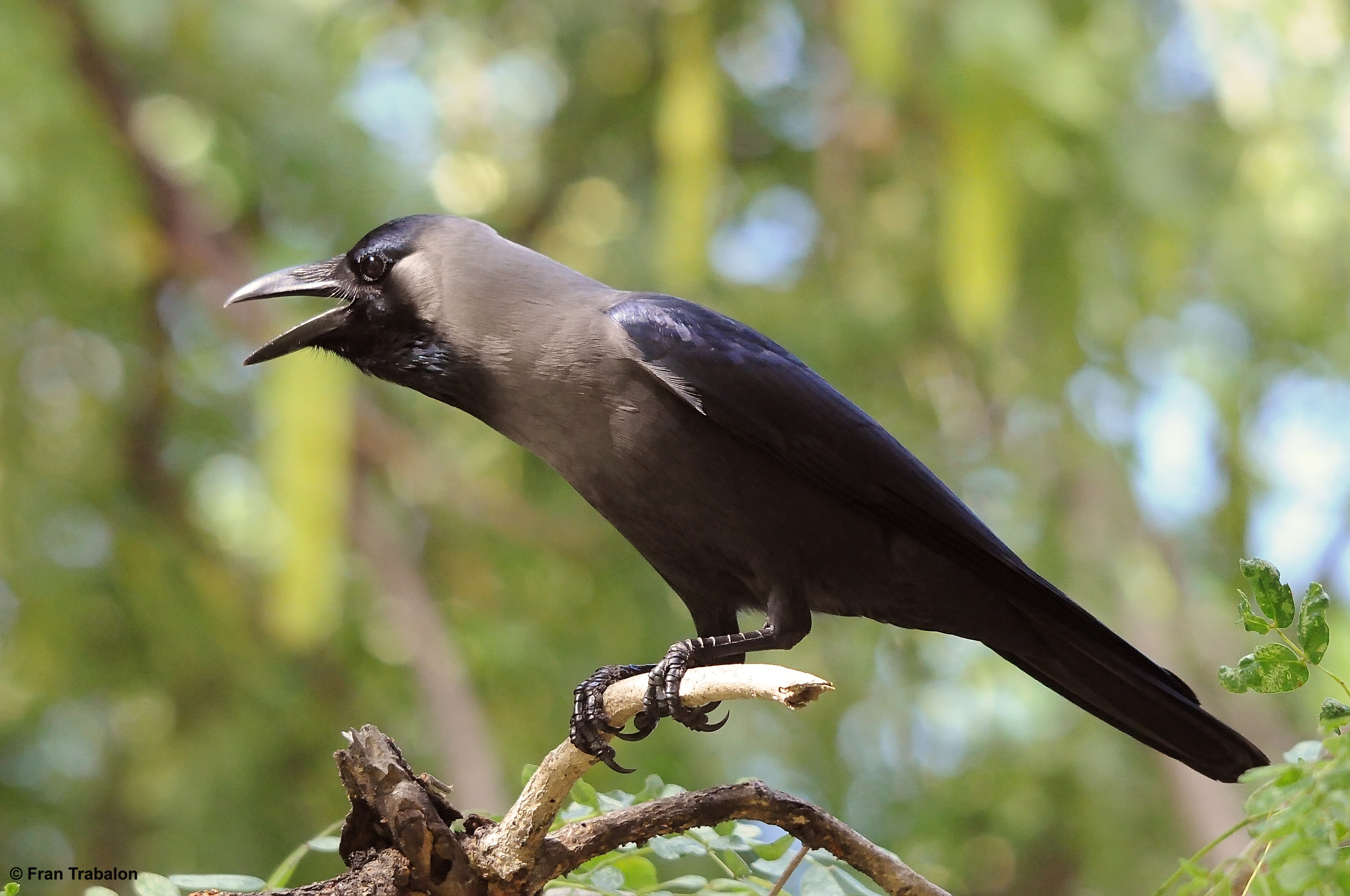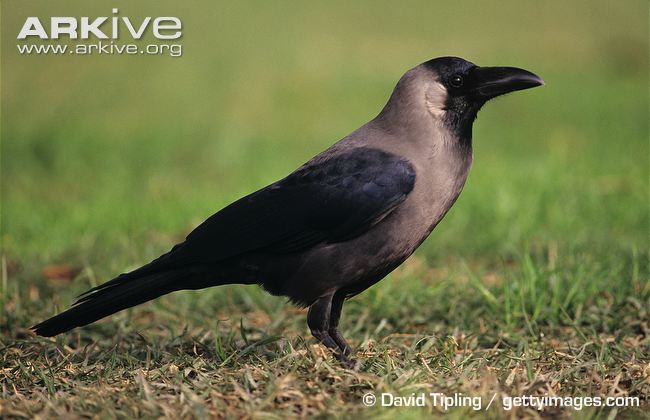
Corvus splendens
SUBFAMILY
Corvinae
TAXONOMY
Corvus splendens Vieillot, 1817, Bengal. Four or five subspecies
recognized.
OTHER COMMON NAMES
French: Corbeau familier; German: Glanzkrдhe; Spanish:
Corneja India.
PHYSICAL CHARACTERISTICS
15.6 in (40 cm); 8.57–12.07 oz (245–371 g). Plumage is black
except for the nape, sides of the head, and breast, which are
gray. Bill, legs, and feet also black.
DISTRIBUTION
Iran to India, Pakistan and Burma, self-introduced to East
Africa, Indian Ocean islands, Malaysia, and South Africa.
HABITAT
Wholly dependent on human habitation; consequently found
in villages, towns, and cities throughout its range.
BEHAVIOR
Highly vocal, gregarious birds, seemingly unafraid of humans.
Will attack and chase off any large bird of prey.
FEEDING ECOLOGY AND DIET
Omnivorous. Diet includes seeds, fruit, grain, nectar, berries,
bird’s eggs, nestlings, mammals, reptiles, amphibians, fish, insects,
wide range of carrion.
REPRODUCTIVE BIOLOGY
Solitary nester except in areas of high population density. Will
use trees, buildings, or other artificial structures for rough stick
nest. Three to four eggs March through July. Incubation
16–17 days; fledging 21–28 days.
CONSERVATION STATUS
Not threatened. Abundant throughout range.
SIGNIFICANCE TO HUMANS
Regarded as a major agricultural and human health pest in
self-introduced areas. In South Africa, birds have been reported
taking food from school children, killing chicks of domestic
fowls, and repeatedly dive-bombing any person near
the nest.
Photo Gallery of - House crow




 Animalia Life
Animalia Life